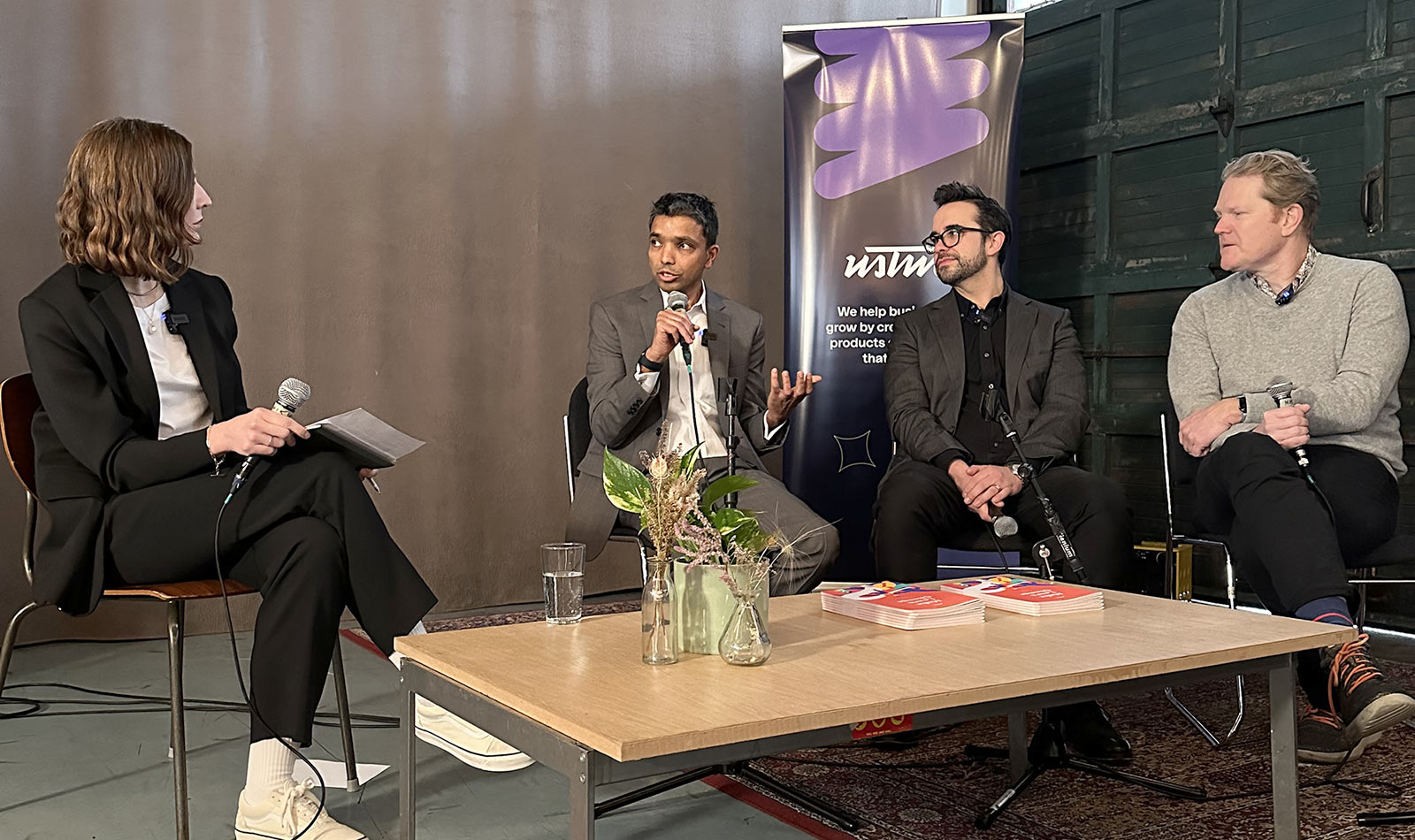You can watch the panel discussion or read a summary of the main points below.
Smartphones and wearables give us access to information that was previously limited to medical devices, for example heart rate, electrocardiogram (ECG), and blood oxygen. Combined with activity and sleep tracking, this offers unprecedented opportunities to empower patients to understand and monitor their condition better.
What are the opportunities and risks of the convergence of consumer devices and medical data? How do we enable both patients and clinicians to make the most of new technology and data? This was the topic of discussion for our Nordic Healthcare panel in Copenhagen. We were joined by two expert panelists: Kapil Parakh, a practicing cardiologist who works as a medical lead at Google Fitbit and has written a book on how patients can be informed and communicate better with their physician; and Alisan Atvur, a trained designer who works as a researcher at Novo Nordisk and focuses on using design to improve the quality of care for people living with chronic diseases.

There were three main takeaways from the lively discussion:
1) Digital health apps can increase patient understanding and engagement
Sustained patient engagement is one of the most elusive goals in healthcare, especially for chronic conditions. By making medical and activity data ever-present to users, we can increase patient attention, engagement, and outcomes. An effective digital health app has to be centered in the subjective experience of the patient and reach them on an emotional level to have impact.
2) Wearables are not medical devices and no substitute for medical advice or diagnosis
Consumer products are not meant to replace the clinician. While many wearables can measure clinically relevant information such as heart rate, detection is not diagnosis. In most situations, the “signal” picked up by a wearable will have to be confirmed through a medical grade device in the clinical setting. While wearables and smartphones are great at surfacing issues or providing early warnings, they should always be used in conjunction with medical care and with the support of trained medical professionals.
3) Consumer wearables have not yet been sufficiently integrated into clinical care paths
There is a rich and growing body of clinical evidence that demonstrates the benefits of consumer wearables in the clinical context. However, most clinicians, healthcare systems, and payers have not acted on this knowledge. Clinicians are worried that consumer devices create more noise than signal. They are often not trained nor do they have the time or the financial incentives to weave wearable data into their care practice and routines.
For ustwo, the evolution of digital health and patient empowerment will remain an area of focus, and we are planning to develop additional content and discussions later in the year.
